Superfriends. A deck dating back to the twilight of Rise of the Eldrazi Standard, where the gimmick of the deck was that it used as many of the printed Planeswalkers as it could all at once. While the name still shows up from time to time in sanctioned formats as a high concentration of synergistic Planeswalkers collect in a deck, the most constant use is when it is referring to a Commander Deck. As a student of pop culture, I got the reference to the 1973 cartoon of the same name, it was clever enough and fitting. As comic book fanboy, today I intend to make a case that in the current age of the Gatewatch and a higher saturation of Planeswalkers, we may need to break the archetype into smaller chunks, especially for “Evil Superfriends” variation. And I don’t intend to call them The Legion of Doom.
Previous to today, attentive readers may have figured out that I am a fan of comic books, especially Marvel Comics during much of the 2000’s and early 2010’s. I got into the Ultimate Spider-Man series in high school, eventually being swept into the main 616 Universe with the release of Civil War. The following event, Secret Invasion – something I legitimately believe we’re moving towards in the Marvel Cinematic Universe – created possibly my favorite status quo, entitled “Dark Reign” – which will not be happening in the MCU – where Norman “Green Goblin” Osborn became the public face of the Avengers. His Avengers were a team comprised of villains using the mantle of established superheroes. Spider-Man was really Venom, Hawkeye was Bullseye in disguise, and Wolverine’s son was known by his father’s codename. It’s all a long story, and not what you’re here for.
Today, I want to make a case that villains of Magic’s story should collected into a deck entitled, The Dark Avengers. Not only because it is high descriptive of what the deck is – like calling Affinity-less Affinity decks “Decepticons” – but because many of the members of the team match-up nicely with the founding members of Osborn’s team. While this is a flavor driven deck, I am not implying that all of these characters are in league with each other in the story.
The Master Planner
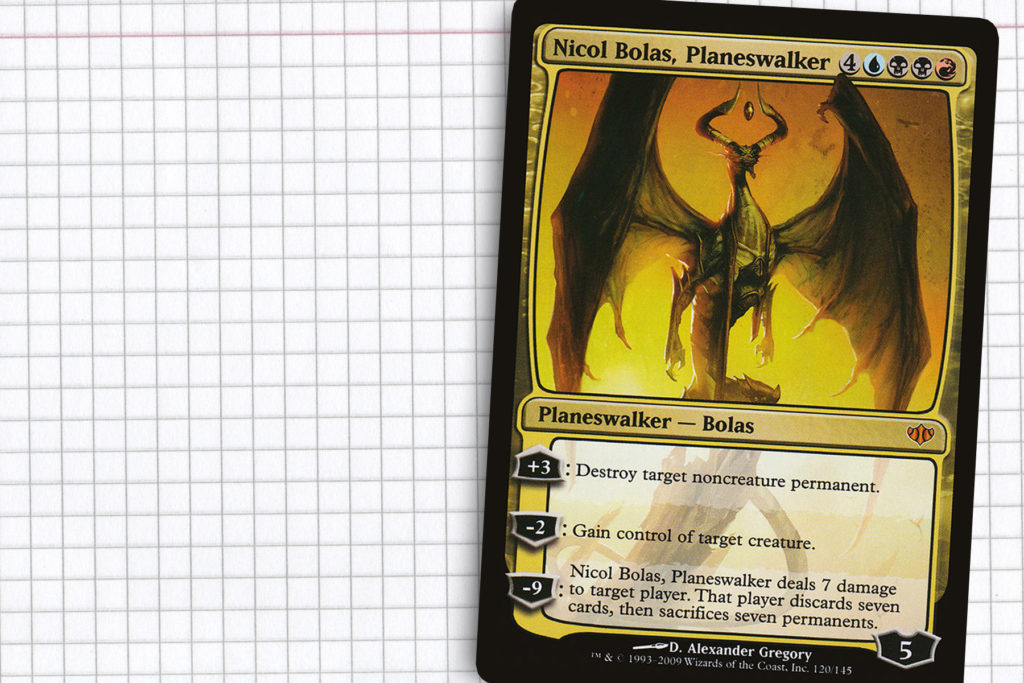
There is no better team leader than Nicol Bolas. While not every walker on this list actually works for him within the story, most do. While Norman Osborn may not have mind control abilities, he is a master planner like Bolas and used the events of Secret Invasion to leverage himself into the role of Iron Patriot after the Marvel Universe believed him to be earth’s savior, not unlike Nicol Bolas, God-Pharaoh. Both characters keep a pretty short leash on their underlings and aren’t afraid to make examples of others to display their power keep others in line.
For the purposes of the deck, disincentivizing people from attacking you with spells like No Mercy and Dissipation Field seems very in-line with Bolas. This will not be able to sway people from attacking your planeswalkers, but they will mean you can remain untouched and cast you Torment of Hailfire, Decree of Pain, and Cruel Ultimatum as clean up. As the master planner and control player, Nicol Bolas will want us playing Leyline of Anticipation and Vedalken Orrery, so that you can always be ready to react.
Wrong Place, Wrong Time
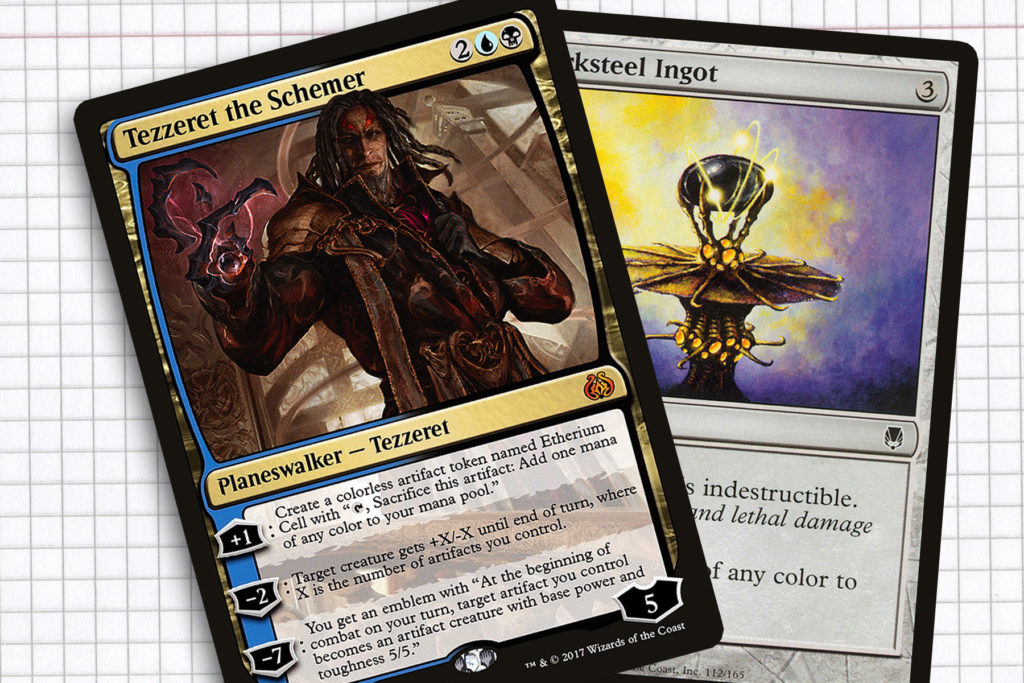
While Tezzeret is by far more intentionally bad, I see him filling the role very shortly occupied by the character Noh-Varr, known as the Dark Avengers’ Captain Marvel. To me, both characters were in the wrong place at the wrong time; Tezzeret coming face-to-face with Bolas before getting mindwiped, and Noh-Varr being known as a war hero before being recruited by Norman. Both are technologically inclined characters, Tezzeret being made of metal from his plane of Esper, while Noh-Varr is an alien.
The comparisons stop there with each character, but the inclusion of Tezzeret the Seeker, Tezzeret, Agent of Bolas and Tezzeret the Schemer could all have place in this deck since it requires a high saturation of artifacts. Since we’re playing with loyalty counters, having Tezzeret’s Gambit on hand, along with other proliferate spells can be like taking an extra turn is some respects. I’ve also found that Savor the Moment is an often overlooked Time Walk effect that should see more play with planeswalkers, even if just as a one-time use of The Chain Veil.
Psycho Killer
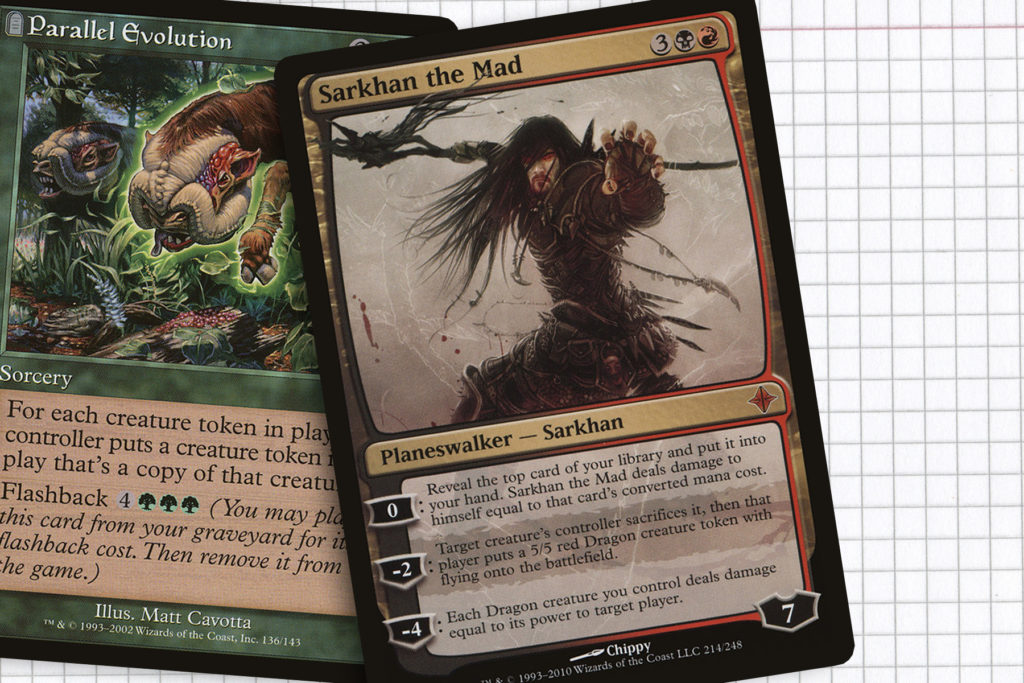
One of the iconic moments from the first issue of Dark Avengers was the introduction of “Spider-Man” aka Venom, in which he devours a sacrificial SHIELD agent. Given enough food, Venom could retain the shape the black costumed Spider-Man, but the beast was always ready emerge. To me, this unpredictableness reminds me a lot of Sarkhan Vol, especially in his original and Sarkhan the Mad incarnations. Both characters are slaves to power, Venom driven by the symbiote itself and Sarkhan falling prey to Nicol Bolas.
Where Venom became a hulking monster, Sarkhan, the Dragonspeaker could actually become a dragon, though I think producing Dragons is thematic enough if we can’t include all three. Sarkhan ties in well with cards like Doubling Season, Parallel Evolution and Parallel Lives, making his token creation abilities even better. Overall, I happen to think Sarkhan has had some underrated cards during his time and he should be considered for the “team”.
Glimpse the Void
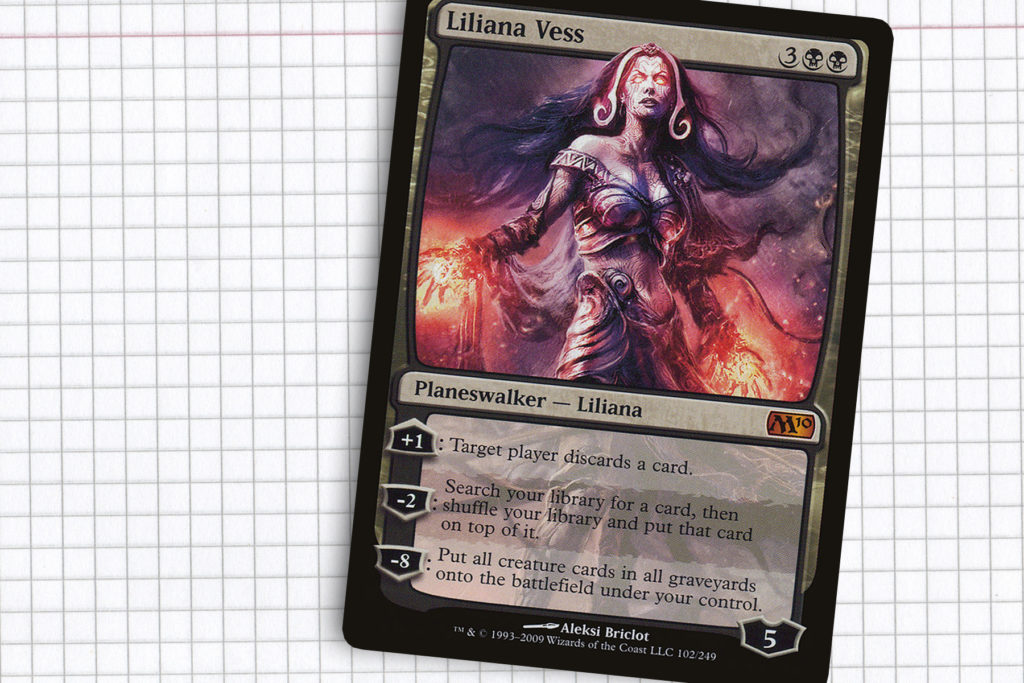
The 2000’s was a weird time for Marvel, it had some high highs and confusing lows; enter The Sentry. Billed as Marvel’s Superman, The Sentry “existed” during the 1960’s, but erased himself from history for the protection of the Marvel Universe. When he was “reintroduced” into the comics around 2005, he was shown to have almost unlimited power, but the source of that power was shrouded in mystery.
Liliana joins the ranks of this deck after some discussion on Twitter with Unspoken Realms and Andrew Weisel which sold me on the fact that Liliana may ultimately be remembered as more of a villain than a hero. This ties in nicely to The Sentry in two ways; 1) Sentry was apart of the core Avengers before being recruited to Osborn’s team. 2) The source of Sentry’s powers was tied to an evil entity known as The Void, thematically similar to how The Chain Veil is an item of immense power, likely not destined for heroics.
Within in the deck, incarnations of like Liliana Vess, Liliana, Heretical Healer, and Liliana, Death’s Majesty could do some good work creating tokens upfront and reanimating creatures later in the game. Vess’ tutor ability even feels thematic of how she is a means to an end for Bolas.
A Little of Both
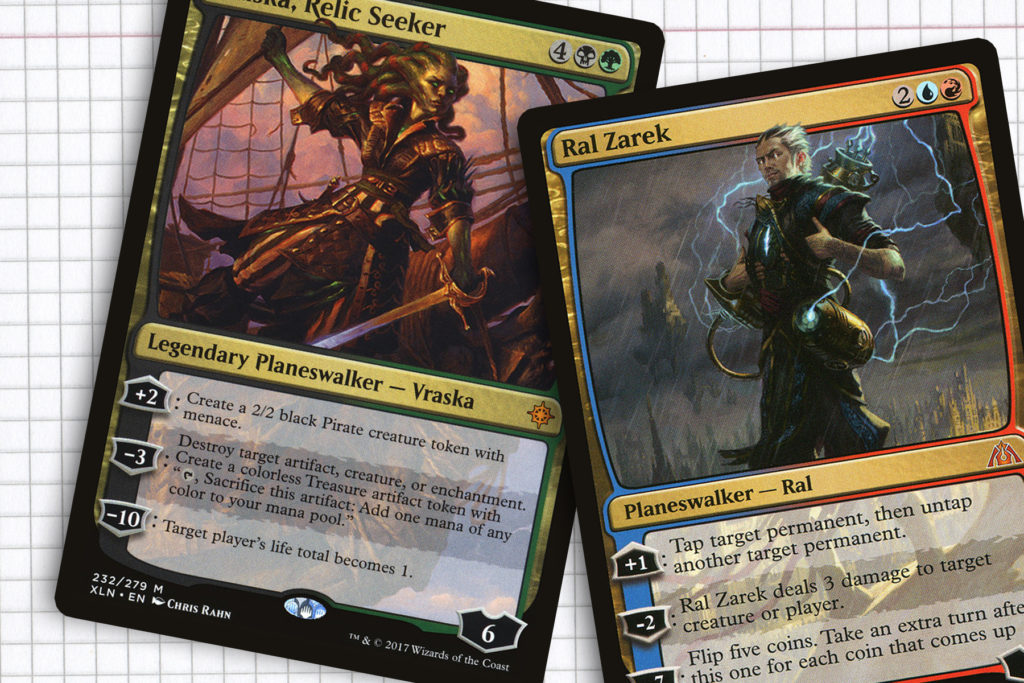
Six months ago, I really didn’t think much of Vraska as a character, the Magic Story Team has really changed that. I am conflicted, as I see her as the perfect stand-in for the team’s Hawkeye, aka Bullseye, because of her time as an assassin. But I could also see her in the role of Ms. Marvel after her recent stories. Ms. Marvel, aka Moonstone, was apart of the Dark Avengers out of a sense of convenience; she had been carried over from the Thunderbolts, a team whose conceit the Dark Avengers were based on, reformed villains posing as a super team. Moonstone wanted to be good but, much like Vraska, was a victim of circumstance.
Since we’re splitting hairs, I see Ral Zarek as having the attributes of that Vraska may be missing. Like Bullseye, he enjoys the power being by his master’s side provides; like Moonstone, he’s scientist. Both planeswalkers seem like great picks in a planeswalker driven deck; Ral having two forms of control built in, and Vraska, Relic Seeker creating creatures and being a form of removal that interacts well with most versions of Tezzeret.
Animal Instincts
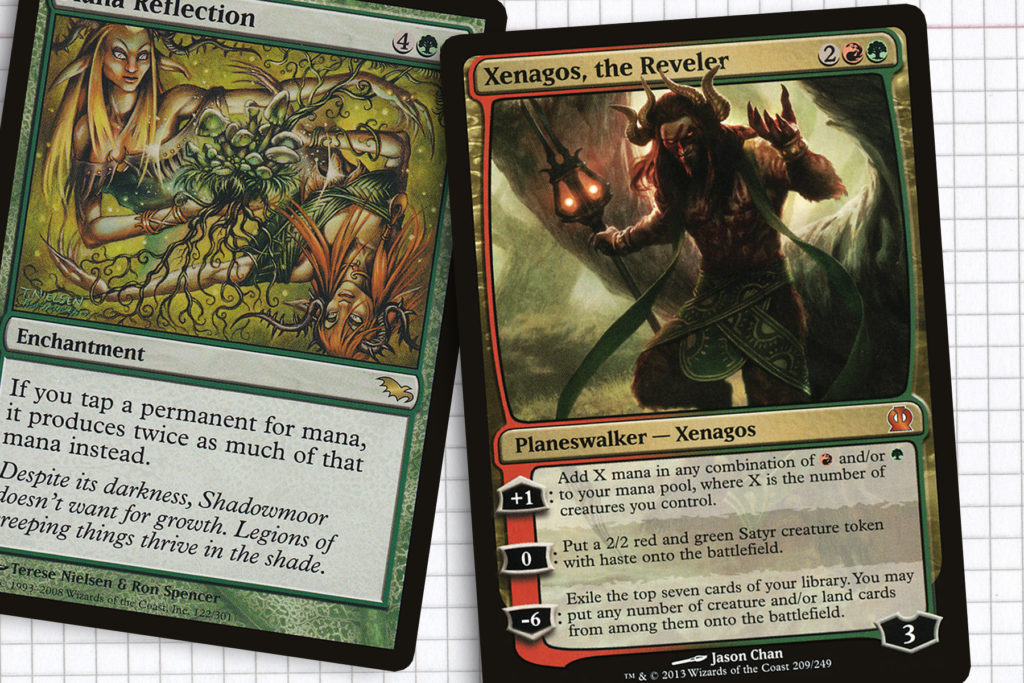
Finally, unlike my changing opinion of Vraska, I was never really that fond of Xenagos the Reveler across his arc in the Theros story. This isn’t too far off of my feelings by the heir to the Wolverine legacy, his son Daaken. Both characters play the role of the feral members of their team, both look at the established system and want to upend it in one form or another; Xenagos by ascending to a god and Daaken by ruining the legacy of his father, who he believes isn’t worthy of the praise. I do get the impression that Xenagos isn’t much of team player to begin with, whereas Daaken at least sees a team as ends justifying a means.
Since I am outlining a deck that is fairly token heavy, it seems entirely possible that Xenagos can play the role of either ramp or producing hasted creatures depending on the situation. He plays well with some of the same enchantments Sarkhan wanted, but also gains momentum with Mana Reflection in play.
When I set out to make this comparison, I can’t say I realized how closely the characters matched in their respective teams. I should not be surprised, some these characters have existed for more than 40 years, and they are very malleable. I hope this week, while being very low on the actual deck skeleton and power level scale, was fun as a thought experiment and argument to nickname an evil Planeswalker deck with something more clever than the Legion of Doom. I can’t imagine this has been the topic of much discussion anyway, but I wanted to get my foot in the door before the debate even started. Next week, I will be returning to form with a lot more Magic talk, but until next time, thanks all!

